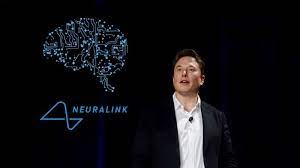
Elon Mask Reveals Microchips For Human Brains Ready Plus 2022,Demostraits How It Works
Published on December 18, 2021 at 7:34 AM by Mc Noel Kasinja
It’s like a Fitbit for your skull with wires,’ he said in a 2020 demonstration of the prototype
“As users think about moving their arms or hands, we would decode those intentions, which would be sent over Bluetooth to the user’s computer,” the website states . “Users would initially learn to control via virtual mouse. Later, as users get more practice and our adaptive decoding algorithms continue to improve, we expect that users would be able to control multiple devices, including a keyboard or game controller.”
During a live-streamed interview at the Wall Street Journal CEO Council Summit, Musk said the chip is working well in monkeys. The company is doing extensive testing to confirm that it’s “very safe and reliable”, and that the device can be safely removed.
In August of last year, Neuralink showcased a preliminary coin-sized device that was described as the latest prototype. “It’s like a Fitbit in your skull with tiny wires,” Musk said of the chip during a demonstration on a pig in 2020.
While he has previously suggested a timeframe for Neuralink implanting its chips in humans, Musk has a history of overpromising and underdelivering. In 2019, he said Neuralink was projecting to begin human testing by 2020, and again in 2021.
“We hope to have this in our first humans — which will be people that have severe spinal cord injuries like tetraplegics, quadriplegics — next year, pending FDA approval,” he told the WSJ.


